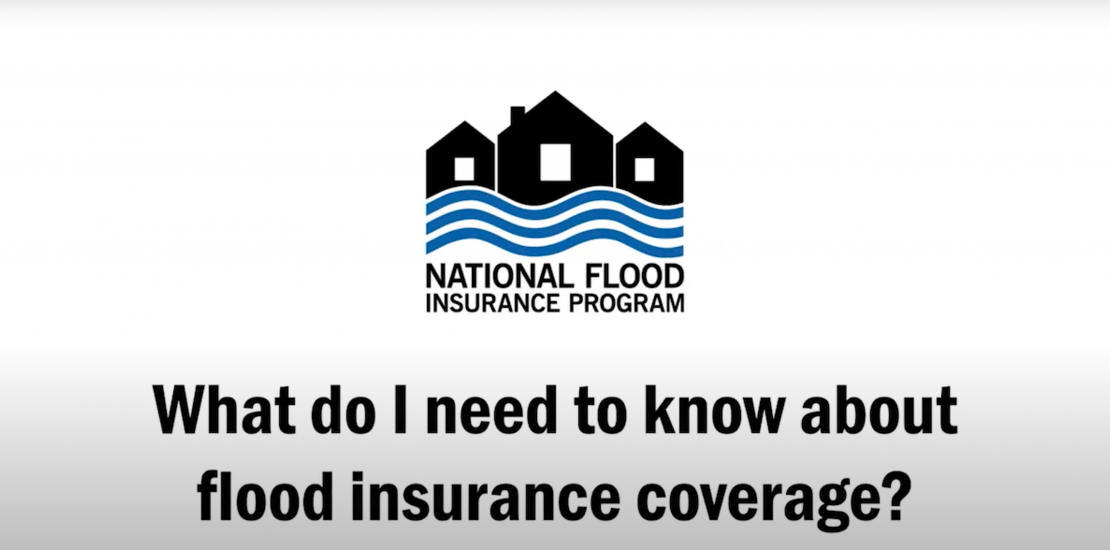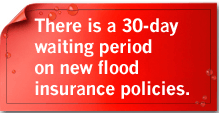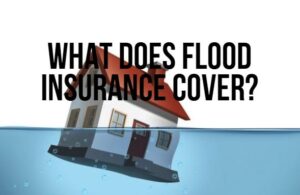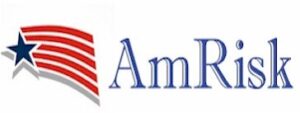
AmRisk Insurance is an appointed agent under the Federal Emergency Management Agency (FEMA) in all 50 states, in over 21,000 communities. Our participation in this program allows us to provide and serve NFIP policies that can keep you protected from costly damage.
What should I know about flood insurance?
So, what does a flood policy help protect? FEMA says you can purchase coverage to help protect your home, your personal belongings, or both. Here are some of the basics for these two types of coverage:
- A homeowners policy does not protect against loss or damage from a flood.
- With a flood policy from the NFIP, you’re covered up to $250,000 for your home and $100,000 for belongings.

I don’t live in a flood zone, do I need Flood Insurance?
Floods are the most common natural disaster in the United States. In fact, your home is more likely to be damaged from flood than from a fire. Floods are caused by storms, melting snow, hurricanes, and water backup due to inadequate or overloaded drainage systems, dam or levee failure.
How do I purchase flood insurance?
AmRisk Insurance can help you purchase a flood insurance policy from the NFIP.
You’ll typically need to wait 30 days for your policy to go into effect, though there are some exceptions. For instance, if you purchase a flood insurance policy at the same time you take out a mortgage, the insurance may go into effect immediately, according to FEMA.
What’s not covered by flood insurance?
Equally important is knowing what’s not covered by flood insurance. Here are a few examples of the types of property and expenses that fall outside the scope of a basic flood insurance policy, according to the NFIP:
- Moisture or mold/mildew damage that “could have been avoided by the homeowner”
- Currency, precious metals, and paper valuables, like stock certificates
- Outdoor property such as decks, fences, patios, landscaping, wells and septic systems, and hot tubs and pools
- Living expenses, like temporary housing (if flood damage deems your home uninhabitable).
- Cars and other self-propelled vehicles (but your auto insurance may offer some protection for your car if you have comprehensive coverage).
In addition, flood insurance provides limited, if any, coverage for below-ground rooms like crawl spaces and basements, and their contents, the NFIP says. Some items in these spaces (like the furnace) are typically included under building coverage. Others (like the washer/dryer) are usually covered under personal contents coverage. And some items — like your personal effects — may not be covered at all when they’re kept in below-ground rooms.
Building property coverage
- What it helps protect: The physical structure of your home and its foundation; plumbing and electrical systems; central air and heating systems; attached bookcases, cabinets, and paneling; and a detached garage (other detached structures need their own policy).
- How it typically pays out: Replacement cost basis (what it would take to repair the home in today’s dollars) for a primary residence and actual cash value (which factors in depreciation) for a vacation home.
- Maximum coverage limit: $250,000
Personal contents coverage
- What it helps protect: Clothing, furniture, and electronics; curtains; some portable appliances; freezers and the foods within them; and certain valuables, like art (up to a specified limit).
- How it typically pays out: Actual cash value basis (takes depreciation into account).
- Maximum coverage limit: $100,000
Standard Flood Policy
If you live in a community that participates in the NFIP, your building and its contents can be covered. You must apply for building coverage and contents coverage separately.
Preferred Risk Flood Policy
If your home or business is in a low or moderate risk zone, your building may qualify for a low-cost Preferred Risk Policy. Premiums for both building and contents start at just under $119

About National Flood Insurance
In 1968, Congress created the National Flood Insurance Program (NFIP) in response to the rising cost of taxpayer funded disaster relief for flood victims and the increasing amount of damage caused by floods. The Mitigation Division a component of the Federal Emergency Management Agency (FEMA) manages the NFIP, and oversees the floodplain management and mapping components of the Program.
Nearly 20,000 communities across the United States and its territories participate in the NFIP by adopting and enforcing floodplain management ordinances to reduce future flood damage. In exchange, the NFIP makes Federally backed flood insurance available to homeowners, renters, and business owners in these communities.
Flood damage is reduced by nearly $1 billion a year through partnerships with communities, the insurance industry, and the lending industry. Further, buildings constructed in compliance with NFIP building standards suffer approximately 80 percent less damage annually than those not built in compliance. And, every $3 paid in flood insurance claims saves $1 in disaster assistance payments.
The NFIP is self-supporting for the average historical loss year, which means that operating expenses and flood insurance claims are not paid for by the taxpayer, but through premiums collected for flood insurance policies. The Program has borrowing authority from the U.S. Treasury for times when losses are heavy, however, these loans are paid back with interest.
Flood Insurance is required by lenders
To get secured financing to buy, build, or improve structures in Special Flood Hazard Areas (SFHA’s) you will be required to purchase flood insurance. Lending institutions that are federally regulated or federally insured must determine if the structure is located in a SFHA and must provide written notice requiring flood insurance.
Flood insurance is available to any property owner located in a community participating in the NFIP. All areas are susceptible to flooding, although to varying degrees, in fact, 25% of all flood claims occur in the low-to-moderate risk areas. Flooding can be caused by heavy rains, melting snow, by inadequate drainage systems, failed protective devices such as levees and dams, as well as by tropical storms and hurricanes.
There’s a big difference between having to buy flood insurance because the law says you must and choosing to buy flood coverage because it’s in your best interests to do so. We recommend that all property owners purchase and keep flood insurance because it is the best means of recovery from flood damaged.
Keep the peace of mind in knowing that your property will be protected from damages from the next storm and you’re not left to cover the losses yourself?
For more information on the National Flood Insurance Program and flood zone maps please visit the FEMA National Flood website.
Different types of flood policies are available based on your property’s location and flood history.
Contact us by phone (602) 702-7600
or email ballen@amrisk.com for more product information.




